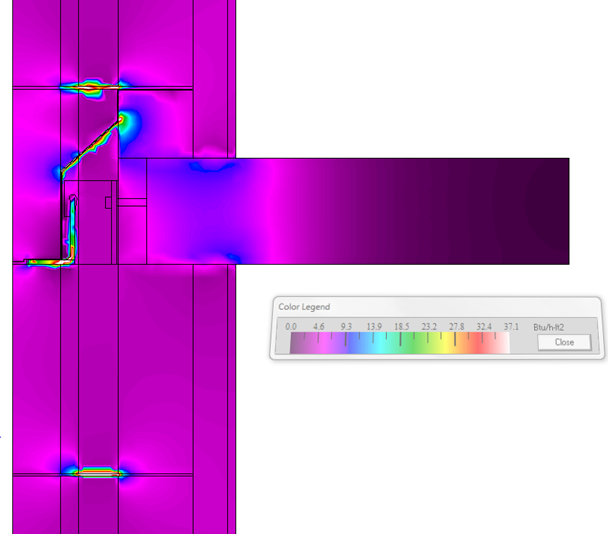Need some advice?
Leave your details and we will get in touch.
Contact an expertBoston’s Building Emissions Reduction and Disclosure Ordinance (BERDO) sets requirements for large buildings to reduce their energy use. The goal is to reduce emissions gradually to net zero by 2050. The ordinance amending the City of Boston code chapter VII sections 7-2.1 and 7-2.2 was filed in council on September 22, 2021 as a continuation of legislation originally passed in May 2013.

*12/6/2022 Update on behalf of Boston Energy Reporting Services:
"Based on the timeline for submission and the current bandwidth of verifiers, we are allowing owners to request an extension for third-party verification. Owners must demonstrate that they have engaged a third-party verifier and that they are unable to complete the verification by the deadline.
Projects include any residential/nonresidential buildings, or parcel with multiple buildings, that sum to over 20,000 ft2 or have at least 15 units. Square footage is determined per the gross floor area listed in Assessing Department records.
The building owner(s), condominium association, or Board of Directors is responsible for reporting and overall compliance. The following items will need to be reported:

SOCOTEC employs Qualified Energy Professionals for Third-Party Verification with experience performing building energy verification outside the building owner or property management organization.
We have experience:
Energy data must be analyzed critically. SOCOTEC has experience:
The broad range of experience offered from SOCOTEC includes:
Our consulting teams perform an analysis of BERDO data, provide an accurate understanding of building performance, and offer possible remediation methods. We prioritize Identified Opportunities and Measures, analyze the implementation costs, quantify energy efficiency savings, and investigate renewable energy generation.
SOCOTEC brings a set of skills to building envelope projects that is unmatched in the industry. Seeing the connection between energy and envelope ahead of many in the industry, our services have come to incorporate energy efficiency analyses, CFD modeling, code/construction advisory, forensic engineering, and fitness for service. In the US, SOCOTEC has >350 people throughout 21 offices.
SOCOTEC is highly qualified with experience from thousands of projects and a dedication to energy/carbon reduction. With a willingness to explore all manners of design strategies and technical measures to achieve meaningful carbon reductions, SOCOTEC has the ability to work efficiently as a team to meet a project’s deadlines. Our energy efficiency, auditing/commissioning, and envelope consulting teams have been providing these services for over 25 years – not merely as general design practice, but as true specialists in these fields.
We have performed extensive audits, for all ASHRAE levels, for large office buildings, schools, hotels, residential towers, and governmental agencies. SOCOTEC’s audit process is customer-focused and tailored to the specific needs of a facility. Following the tenets of ASHRAE guide 211, the audit team works through a preliminary energy analysis to identify all opportunities.
We work with the project team to come to consensus on an actionable implementation plan and assist with development of bid/acceptance criteria. As an audit progresses, we identify the costs that are not always apparent, including the cost of carbon, cost of disruption from equipment failure, and redundancy. Thus, we separate the essential from optional.
Finally, we review the associated risks inherent in the proposed measures in terms of Building Code, Local Laws, Indoor Environmental Quality, operational safety, equipment longevity and warranty issues from changes.
SOCOTEC’s energy and carbon assessments are informed by our comprehensive combination of expert services, including:
Thermal Analysis of Wall to Slab Connection and Subsequent Heat Transfer


We have a broad view of current advances in energy efficiency and carbon, and as important, from experience, we know what actually work. Examples:
Thermal Comfort Analysis of a Double Paned Window vs a Triple Paned Window


SOCOTEC has extensive experience with envelope replacements and retrofit, with special attention to envelope improvement and ensuring it does not affect the durability of the walls and roofs. We have been providing consulting on a range of envelope retrofit projects, that include office, hotel, residential, swimming pools, conference centers, museums, and others.
Here are a few examples:
With lighting, we have worked with the designers to reduce the Lighting Power Density (LPD) while maintaining the light quality – and performed daylight/lighting modeling as necessary. For instance, for a 1 million square foot (SF) office retrofit in New Jersey, completed in 2018, we achieved 0.6 w/SF. Even lower densities are now possible.
With HVAC, we have analyzed many types of HVAC, and closely looked into improvements to all - from the typical floor-by-floor water-cooled DX to radiant floors (e.g., 561 Greenwich) chilled ceilings (e.g., 74 Trinity), modulating 100% DOAS, EC Motors on Fan Coils, and Digital VAV conversions, plus many more.
We are active in performing studies on saving energy in a COVID environment, regarding high filtration, UVGI, bi-polar ionization, hydrogen peroxide, and also less conventional approaches, such as means to reduce air communication between lobby and service areas to office spaces.
We use a range of tools and procedures on and off the field. They range from:
Our General Approach is as Follows:


Get the latest updates about SOCOTEC, subscribe to our newsletter!